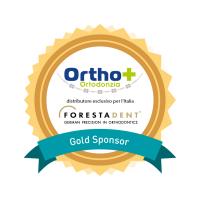Abstract
Pediatric Obstructive Sleep Apnea: Orthodontic Assessment
by Segù Marzia
How orthodontist identifies Pediatric Obstructive Sleep Apnea (OSA)? Pediatric OSA is characterized by intermittent complete or partial obstruction (obstructive apnea or hypopnea); prolonged partial upper airway obstruction; or both prolonged and intermittent obstructions that disrupt normal ventilation during sleep, normal sleep patterns, or both. All that waking up can leave one pretty sleepy the next day. Untreated, obstructive sleep apnea can affect school work and raise child’s risk of serious health problems. The prevalence in children has been estimated at 1% to 4%, from 1.1% in pre-school age to 4% in school-age but the prevalence may currently be higher due to the pediatric obesity epidemic, in children with chronic kidney disease. The prevalence was found to be significantly higher in the general pediatric orthodontic population than in a healthy pediatric population (5%). OSAS prevalence has 2 peak periods: The first peak occurs in children from 2 to 8 years of age, with the presence of enlarged adenoid and/or tonsils. Parents tend to under-report symptoms at medical consultation. Although overnight polysomnography (PSG) remains the gold standard for the diagnosis, this procedure is expensive, and in many countries (including Italy) it can only be used in a minority of cases, due to the low number of paediatric sleep centres available, delaying the diagnosis and treatment of patients. The role os orthodontist is crucial.
Learning Objectives
After this lecture, you will be able to know the most frequent symptoms of Pediatric OSA
After this lecture, you will be able to know the most frequent signs of Pediatric OSA
After this lecture, you will be able to identify patients at risk for Pediatric OSA












